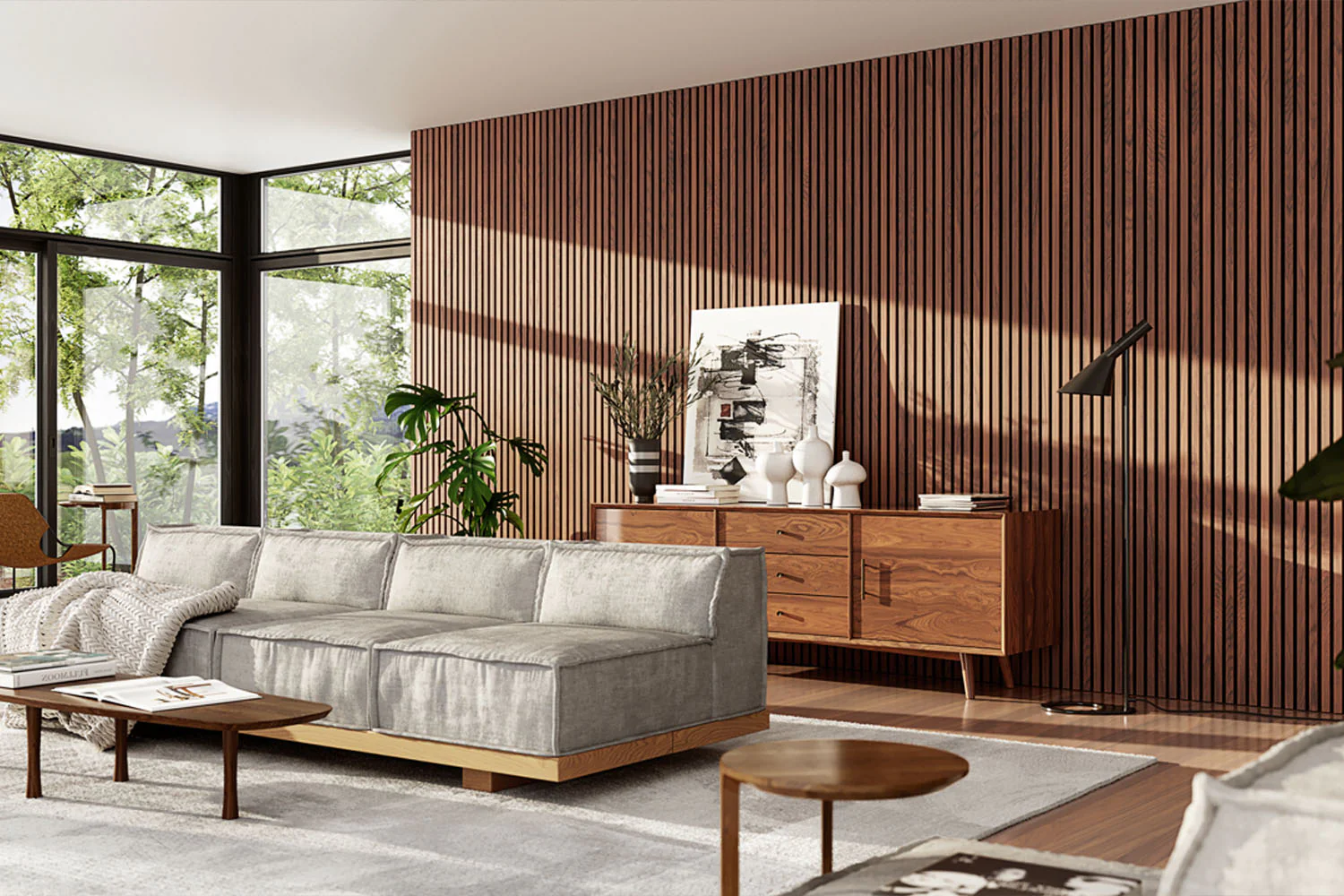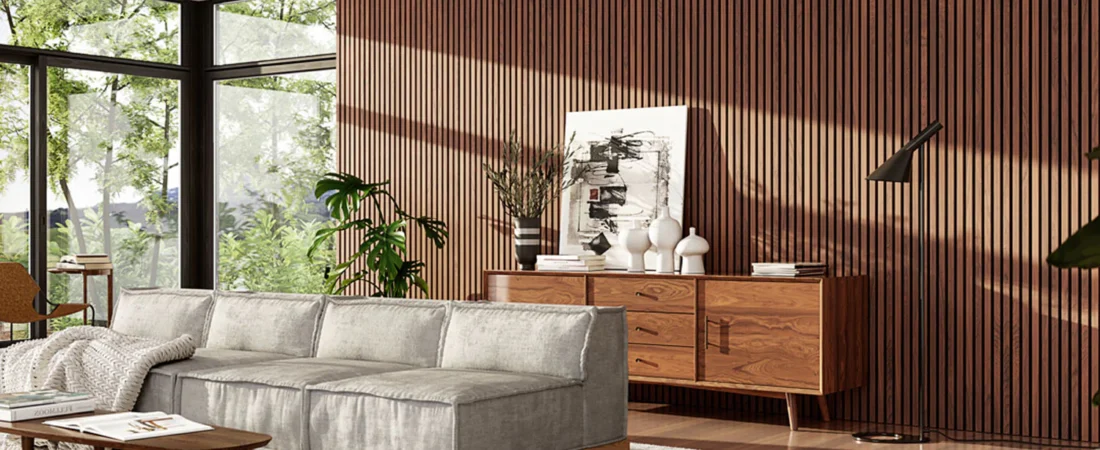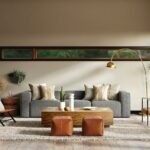In a sleek **modern living room design**, where furniture is minimal, the walls often become the canvas. Strategic use of **accent walls** can inject personality, define zones, and create a sophisticated focal point without cluttering the space with unnecessary decor.
I. Purpose and Placement of Accent Walls
An accent wall must have a clear intention to be effective, not distracting.
1. Ideal Placement for Focal Points
- Behind the Sofa: The most common placement, grounding the seating arrangement and highlighting the room’s main piece of furniture.
- Behind the Media Unit: Drawing attention to the entertainment center, often using textural panels for visual interest.
- Highlighting Architecture: Use the wall to accentuate unique features like a fireplace or an arched doorway.
2. Zoning in Open-Concept Spaces
In open-concept layouts, an **accent walls** can visually separate the living room from the dining or kitchen area, maintaining flow while providing a subtle boundary.
II. Textures and Materials for Impact
Moving beyond just paint, 2025 trends favor tactile and three-dimensional materials.
1. Contemporary Material Choices
- Slatted Wood Panels: Vertical or horizontal wood slats add dimension and warmth, a key feature in Scandinavian-modern design.
- Large Format Marble/Stone Veneer: Creates a luxurious, permanent focal point, particularly effective around a linear fireplace.
- Dark, Matte Paint: Deep, moody colors (forest green, midnight blue) absorb light, creating a dramatic, enveloping effect perfect for cozy evenings.

Want to see how texture and color play out across the entire home? Get the full scoop on 2025 aesthetics in our guide: Modern Living Room Design Trends in 2025.





